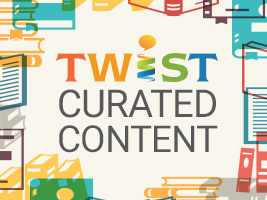Curated Industry Content for the Week of 08/01/16
 Every Monday we curate a number of articles and blog posts that have relevance to members of the eLearning Guild Community, and to the learning and performance field as a whole. Each piece of content that we share includes a brief introduction from the member of the Guild Community sharing why they think the content is important.
Every Monday we curate a number of articles and blog posts that have relevance to members of the eLearning Guild Community, and to the learning and performance field as a whole. Each piece of content that we share includes a brief introduction from the member of the Guild Community sharing why they think the content is important.
Here’s the content for this week:
NASA Shapes the Future of Space Design and Exploration with its Mixed Reality Program by Mike Senese
Mixed reality, a combination of augmented and/or virtual reality and the physical world, is a growing field with much potential for learning and performance. This post explores a cutting edge example from Nasa that uses Microsoft Hololens to improve the prototyping phase of engineering, as well as helping people learn more about Mars by creating an experience through which people can virtually walk on the plan. -David Kelly
Is it original? An editor’s guide to identifying plagiarism by Benjamin Mullin
I share this post for two reasons. First, in a field where we create and curate content constantly, it’s important for us to understand what plagiarism is and how to avoid it. This post does an excellent job of explaining that. And while it does so in words, it also does so in a visual format. That’s the second reason I share this post. It includes a flowchart that takes the complicated issues around plagiarism and presents it in a simple to absorb and understand graphic. -David Kelly
Ignore (Some) User Feedback by Eric Karjaluoto
User feedback is an incredibly important part of making learning experiences that actually matter for your audience. But is every piece of feedback useful? It turns out, probably not, particularly when that feedback is conflicting, too focused on a single user’s needs, or stuck on only doing things the way they’ve always been done. This article talks about when (and how) you should consider feedback and when it’s best to not act on every opinion you receive. -Bianca Woods
Finally, stock images that push the boundaries of boring gender stereotypes by Laura Feinstein
Stock images are a major tool in the elearning developer’s toolkit. They help us share information and tell a story through visuals. And while the can be very powerful tools that can aid us in creating narratives, they in some cases have also restricted narratives by providing a selection of images lacking diversity of subjects and roles. This recent addition to Getty’s stock image portfolio helps broaden the possibilities that exist in stock image sites. -David Kelly
Why all designers need to understand color blindness by Alex Bigman
The need for our content to be accessible to all is growing in importance. This post focuses on a specific topic that is often left out of the accessibility conversation: color blindness. The post does a great job of presenting examples that allows designers to better understand what the experience of being color blind is like, and makes suggestions on how to accommodate color blind members of your audience. It also addresses strategies color blind designers can use to enhance their work. -David Kelly
How To Use Predictive Analytics for Student Success by Ellen Wagner
There’s a lot buzz and interest in data and predictive analytics. This post does a great job of laying out a roadmap for what effective use of predictive analytics looks like. It’s a concise post that lays out the process of using predictive analytics in an easy to understand way. While the post is written for an academic audience, the process described can easily be applied to corporate or other environments. -David Kelly
What are you reading?
If you have an article, blog post, or other resource that you think we should consider sharing in a future Curated Industry Content post, please feel free to send a link to the resource to David Kelly along with a few sentences describing why you think the resource is valuable.

Leave a Reply